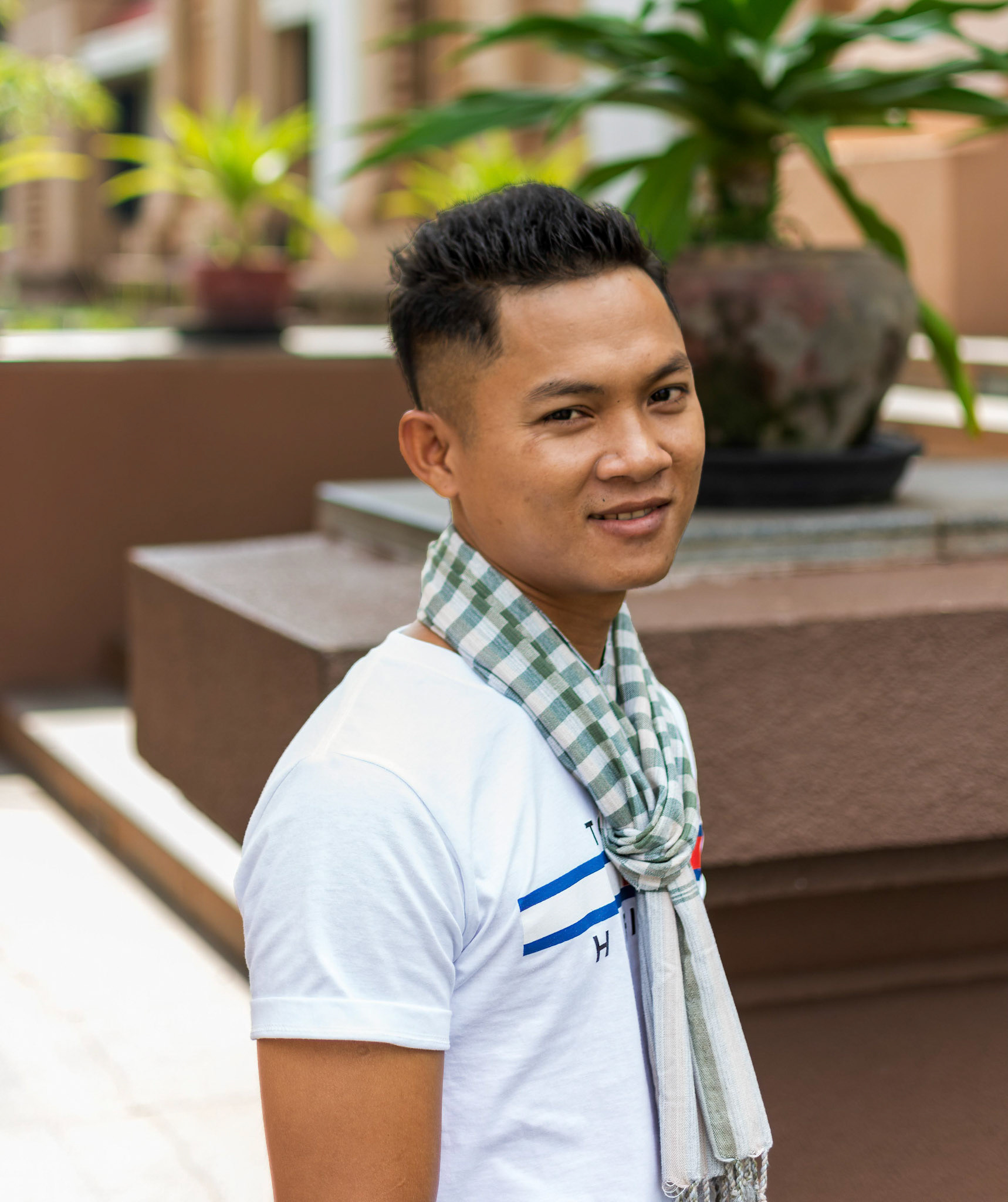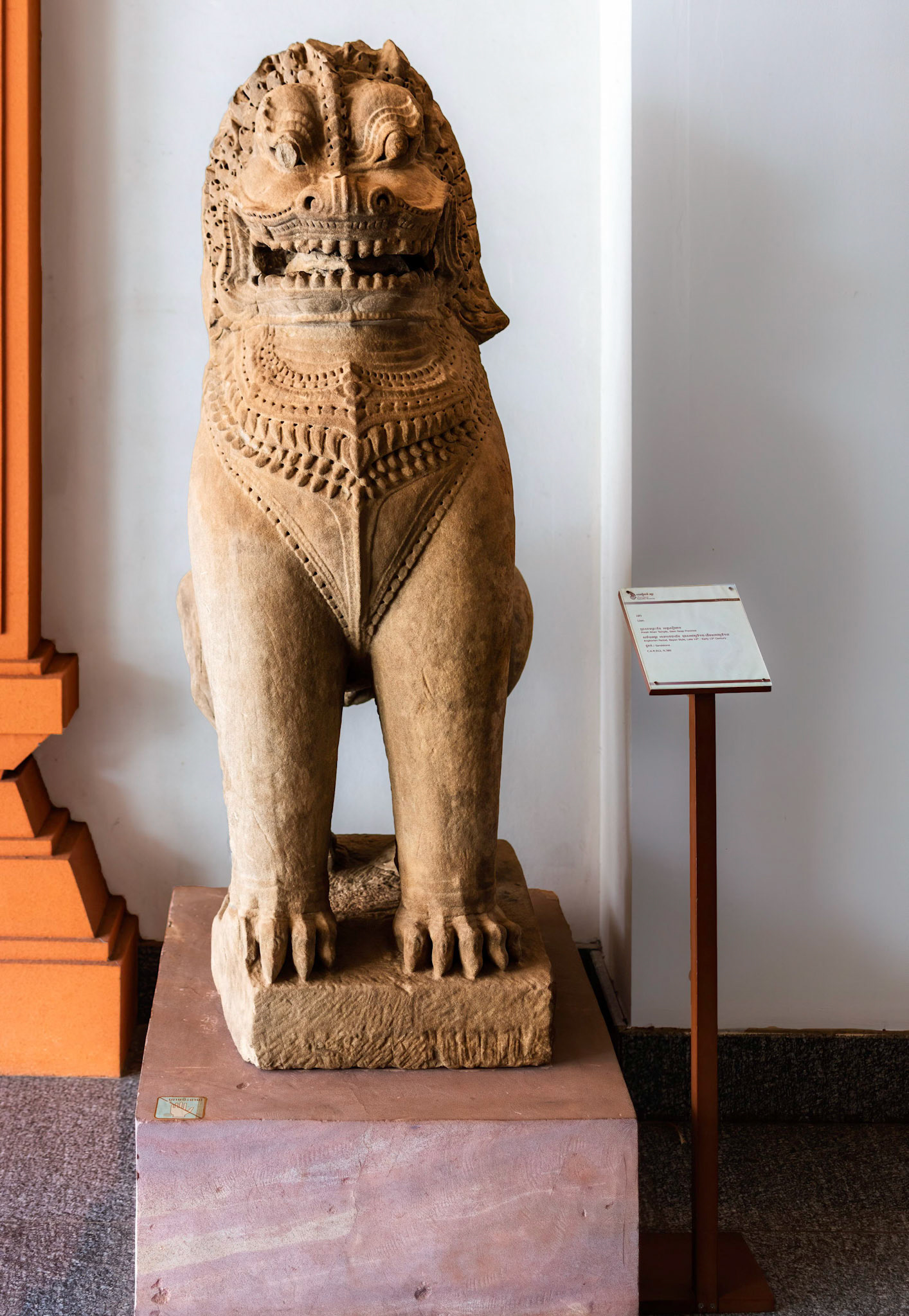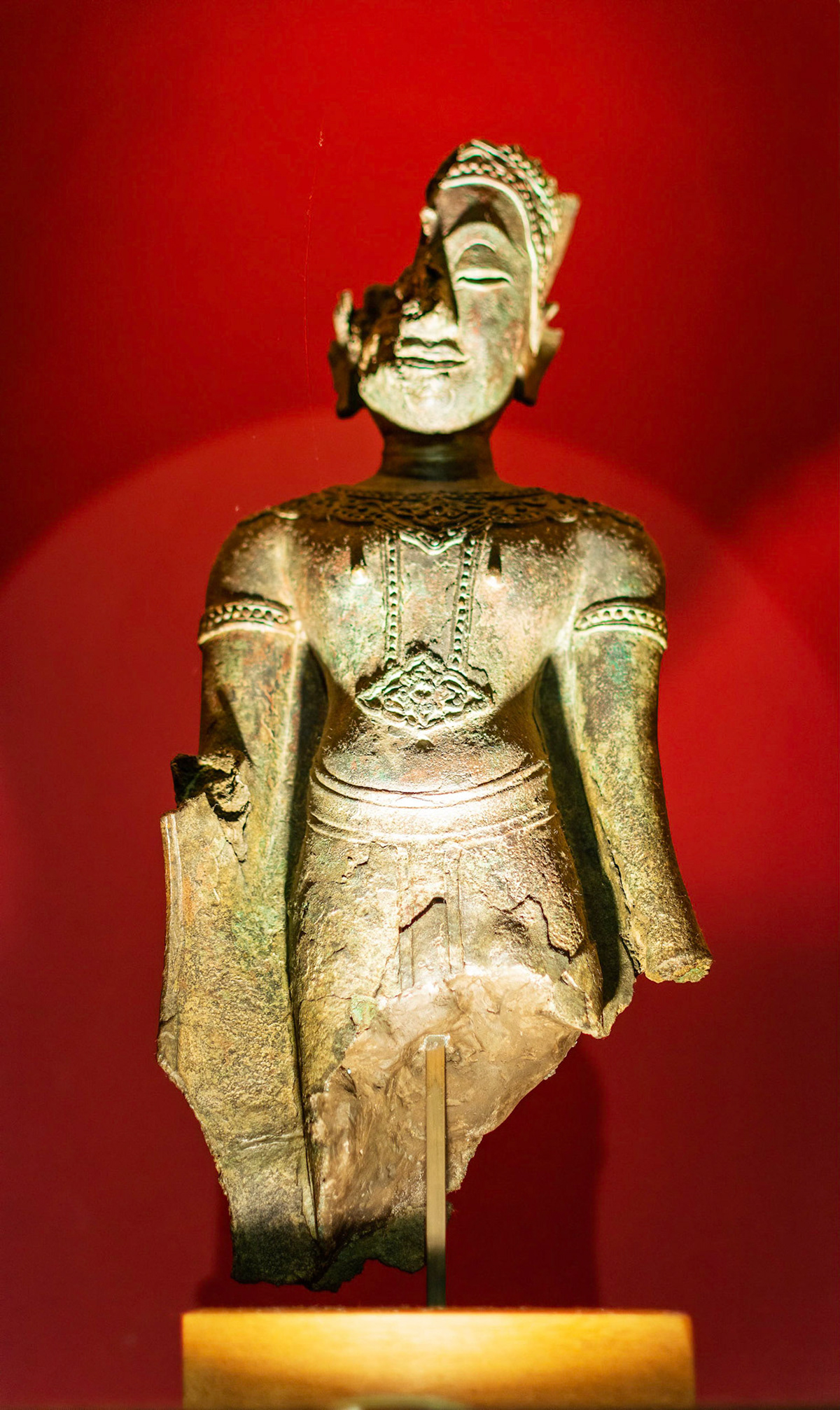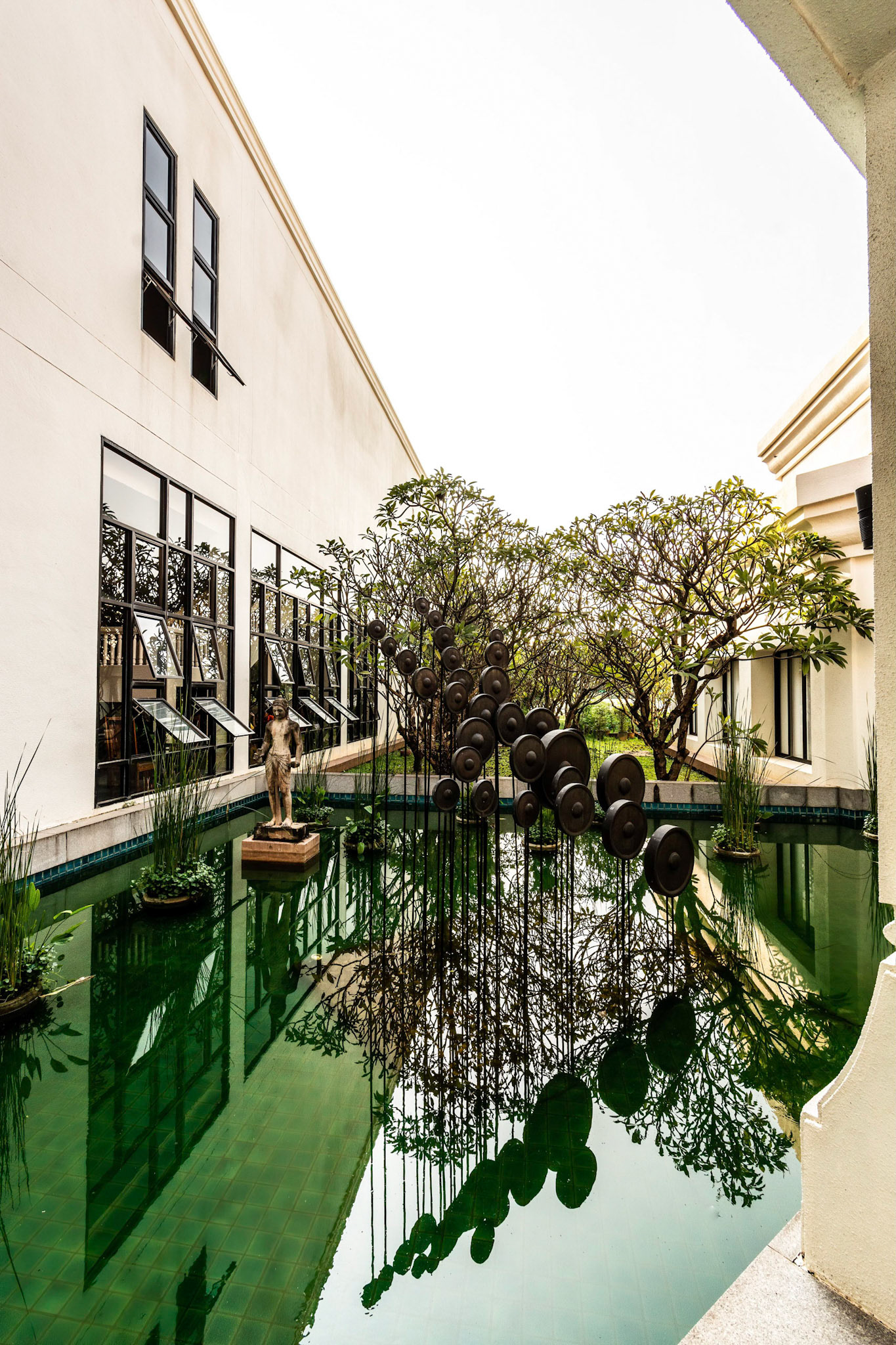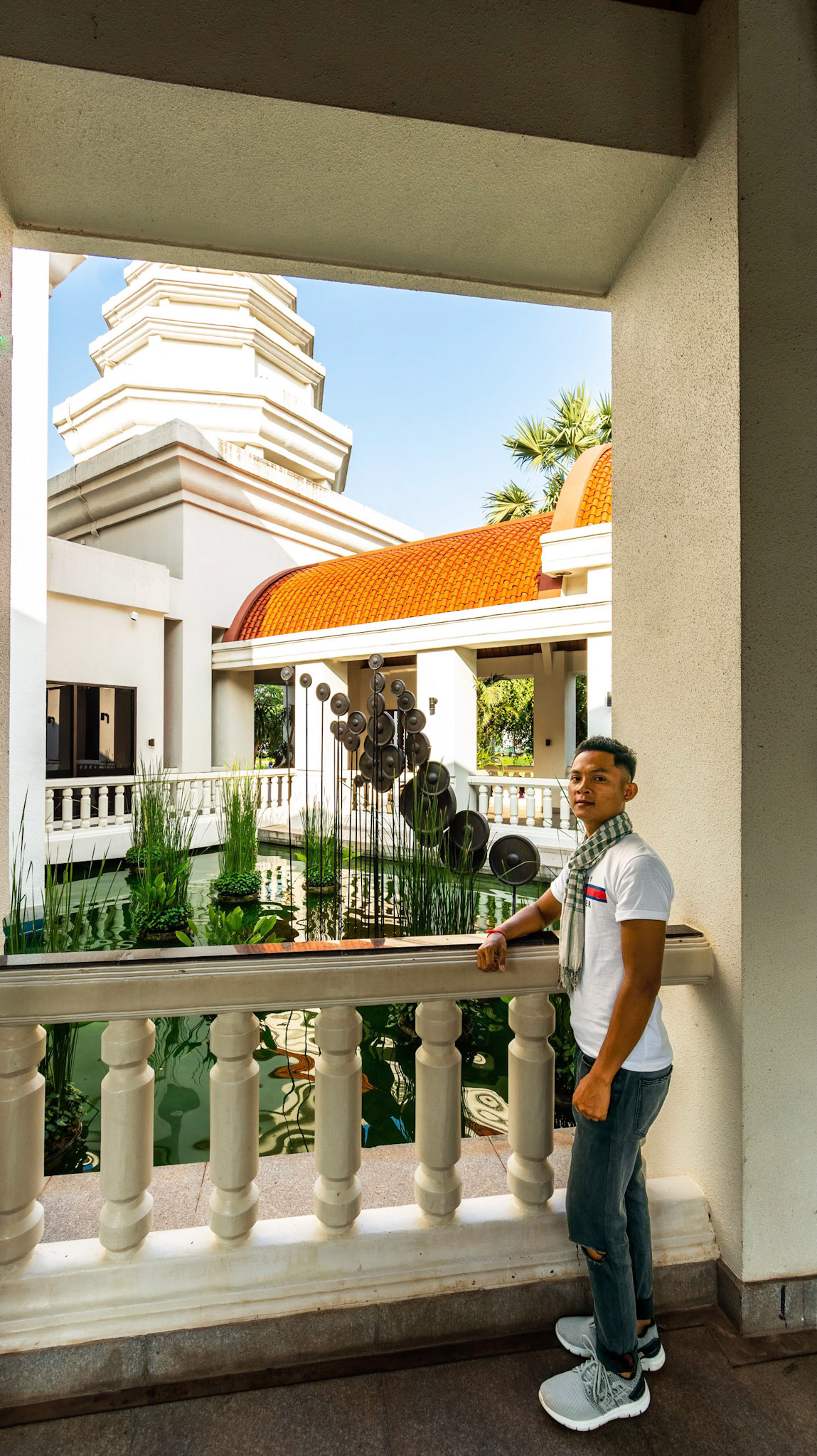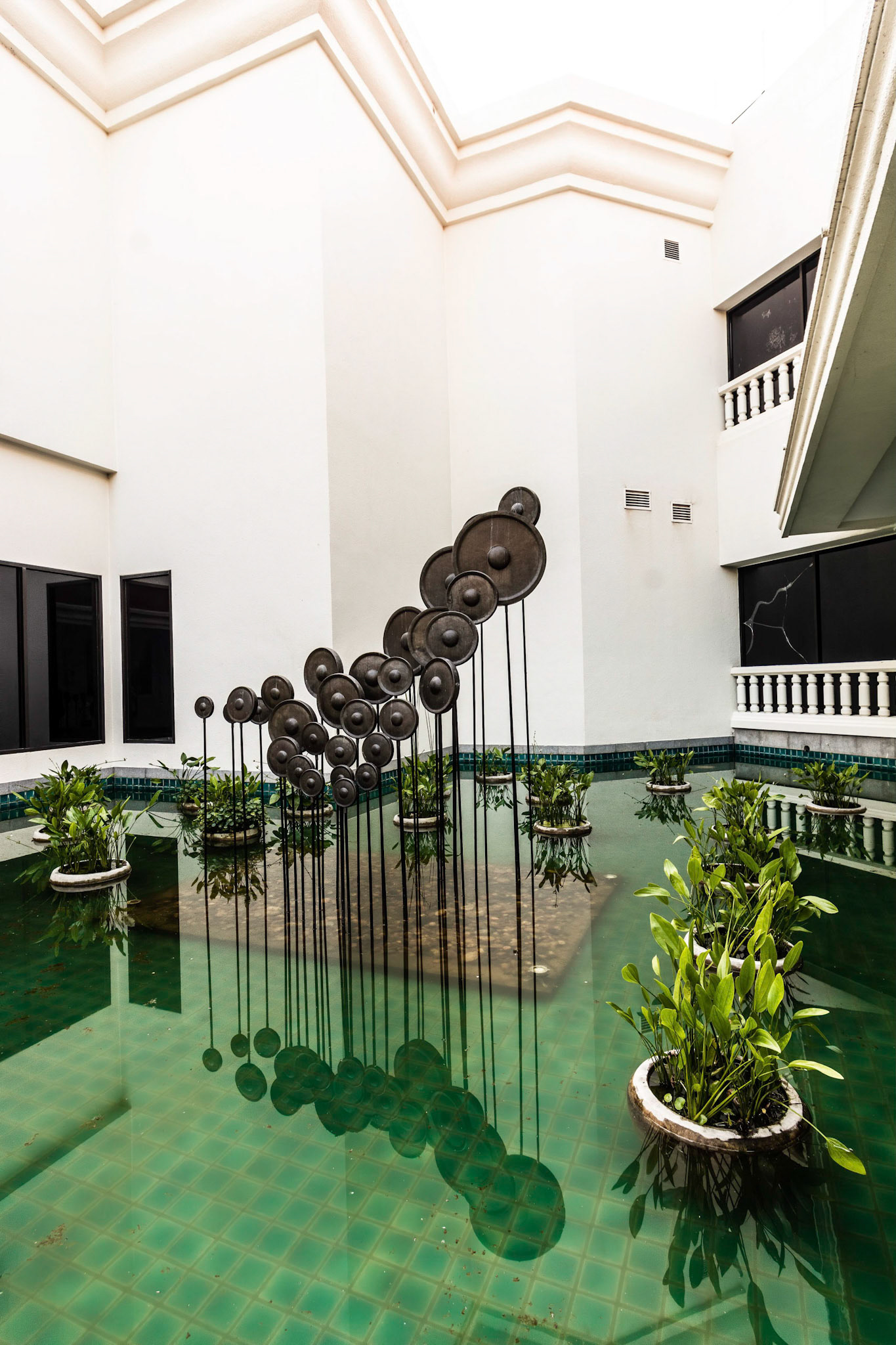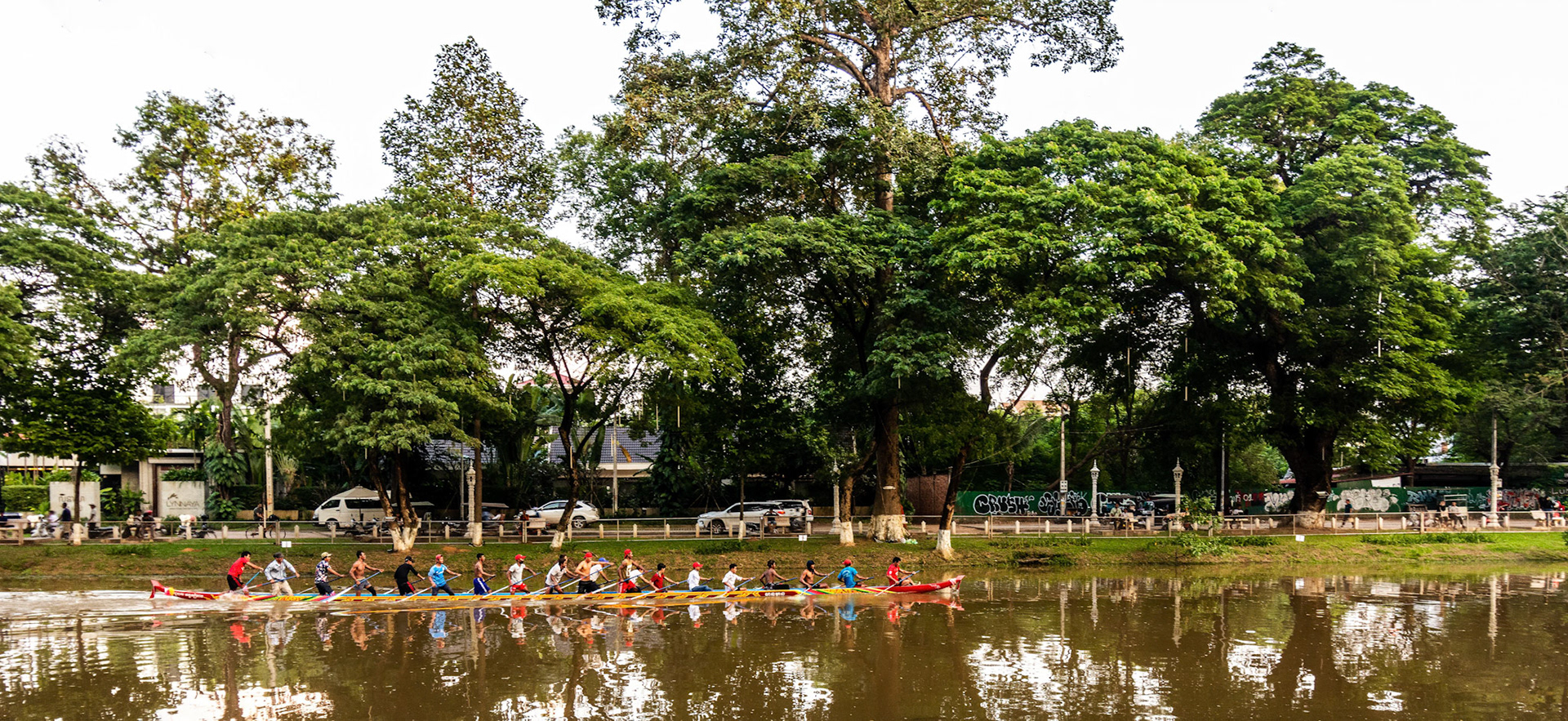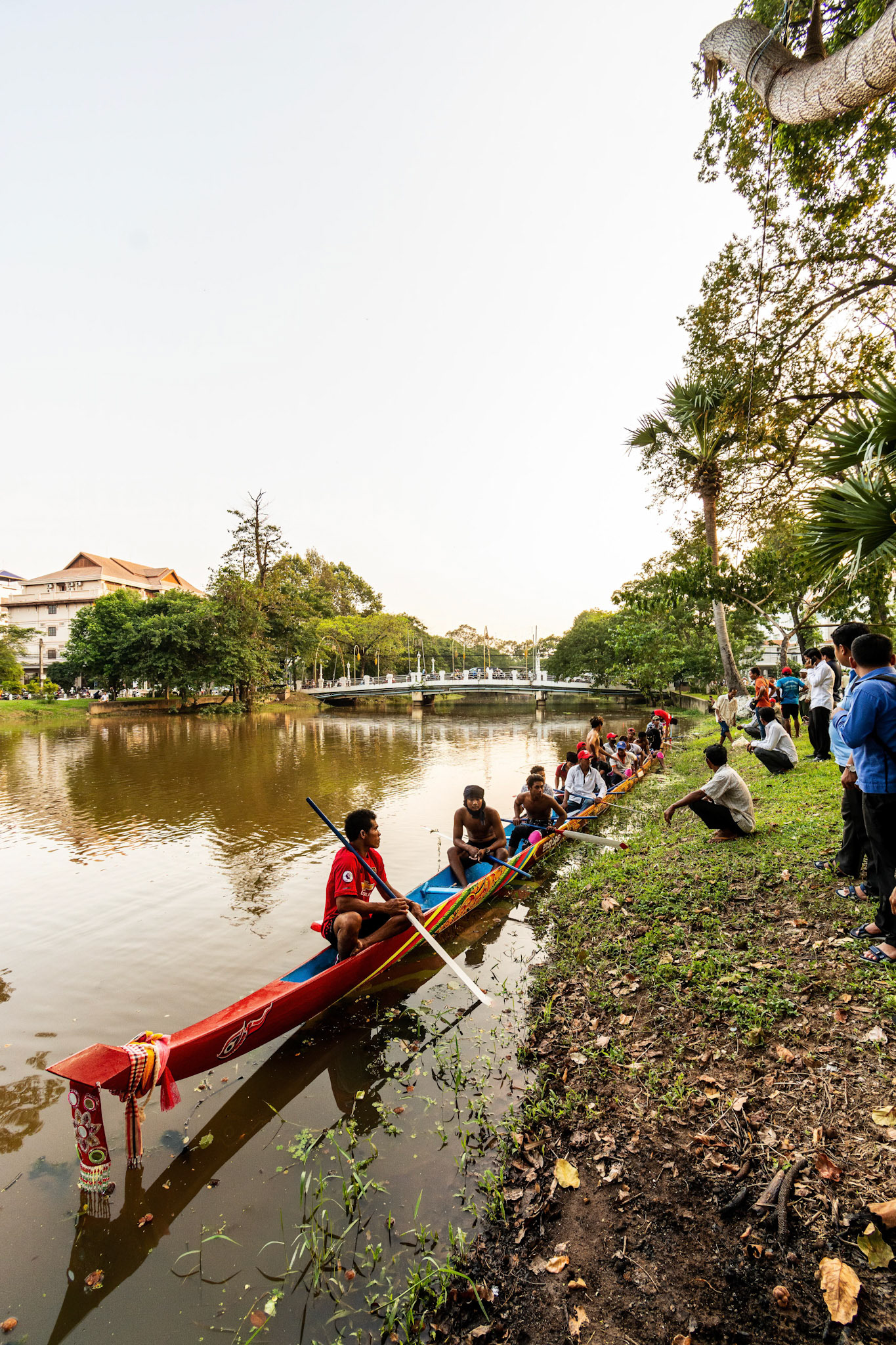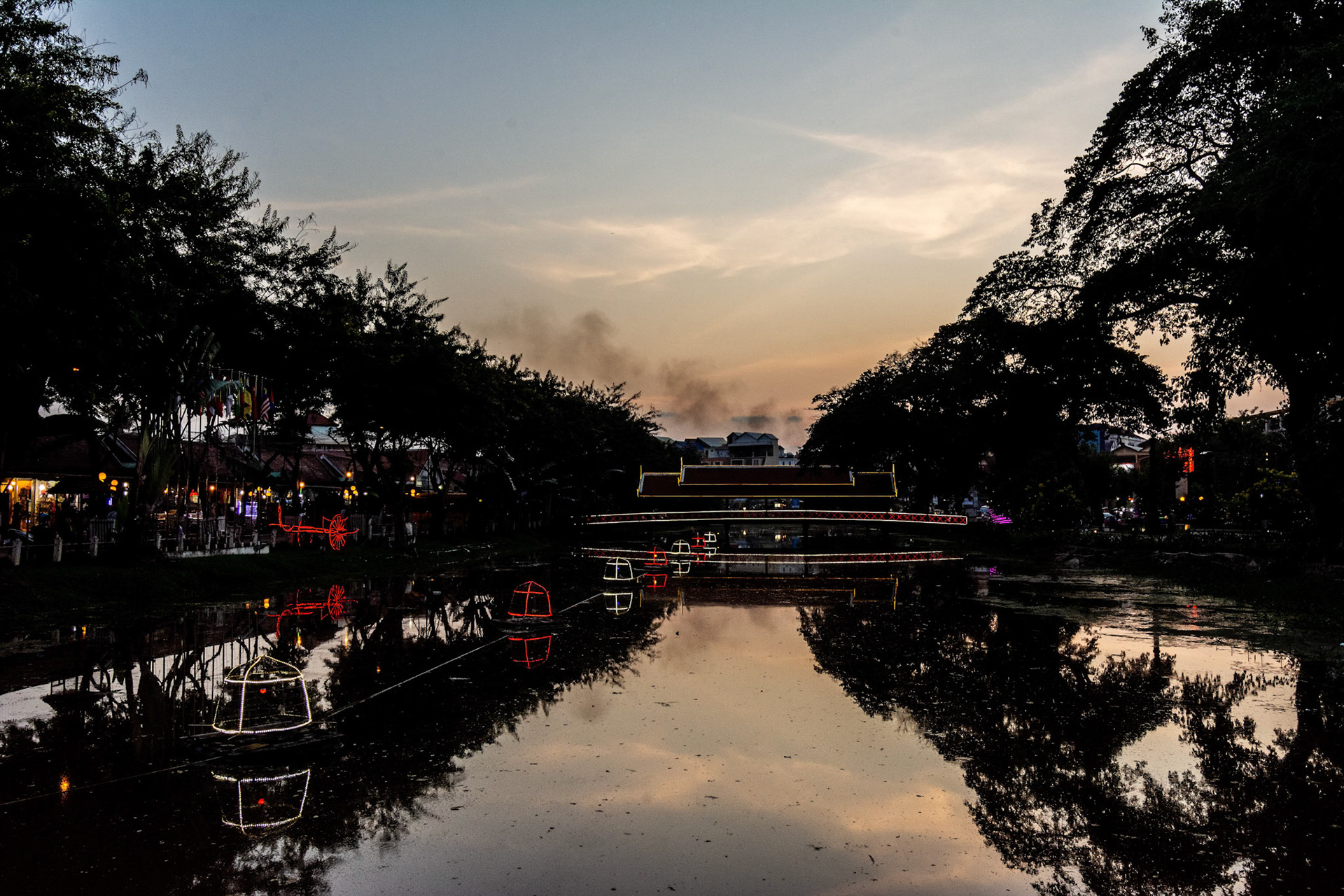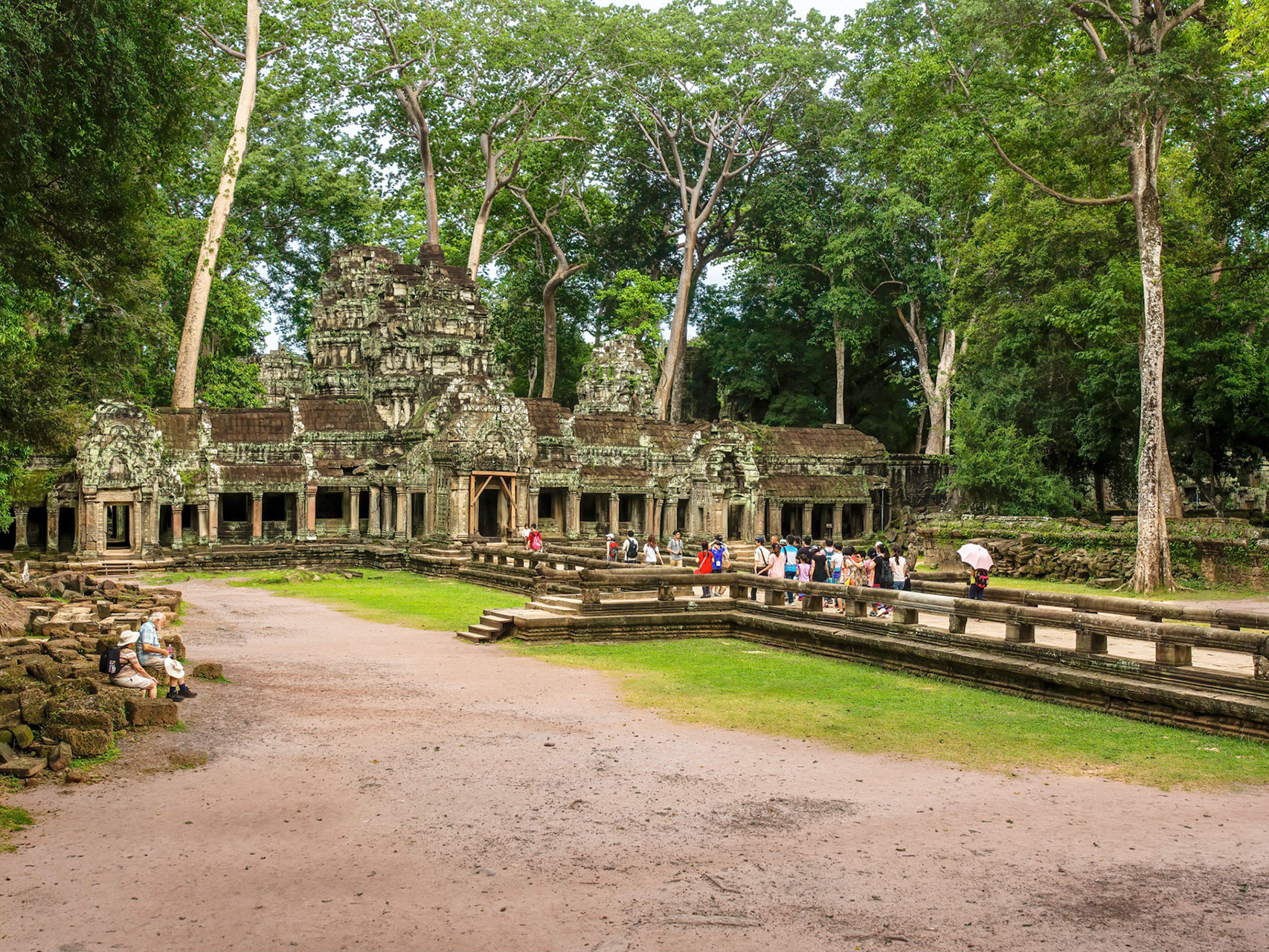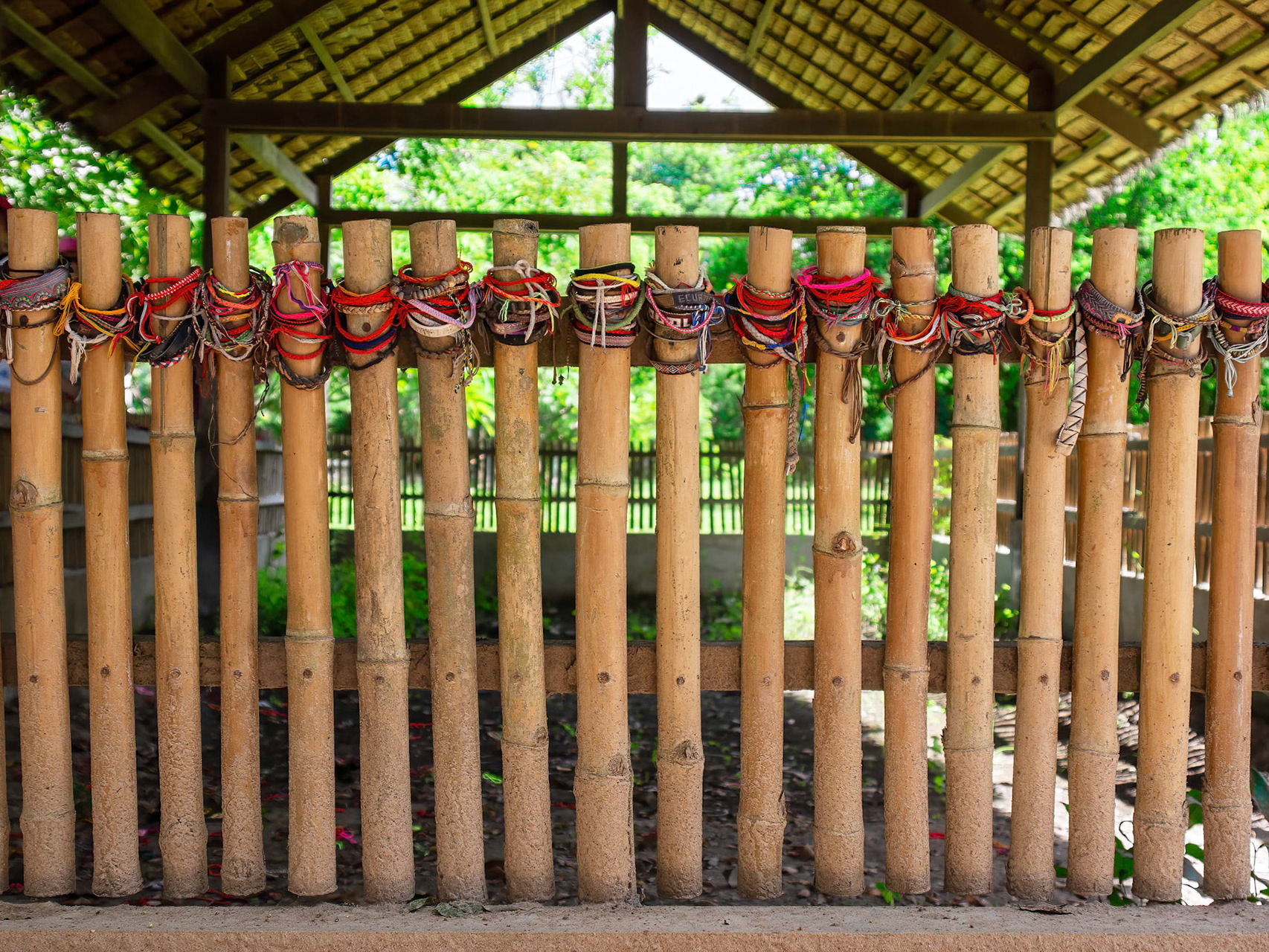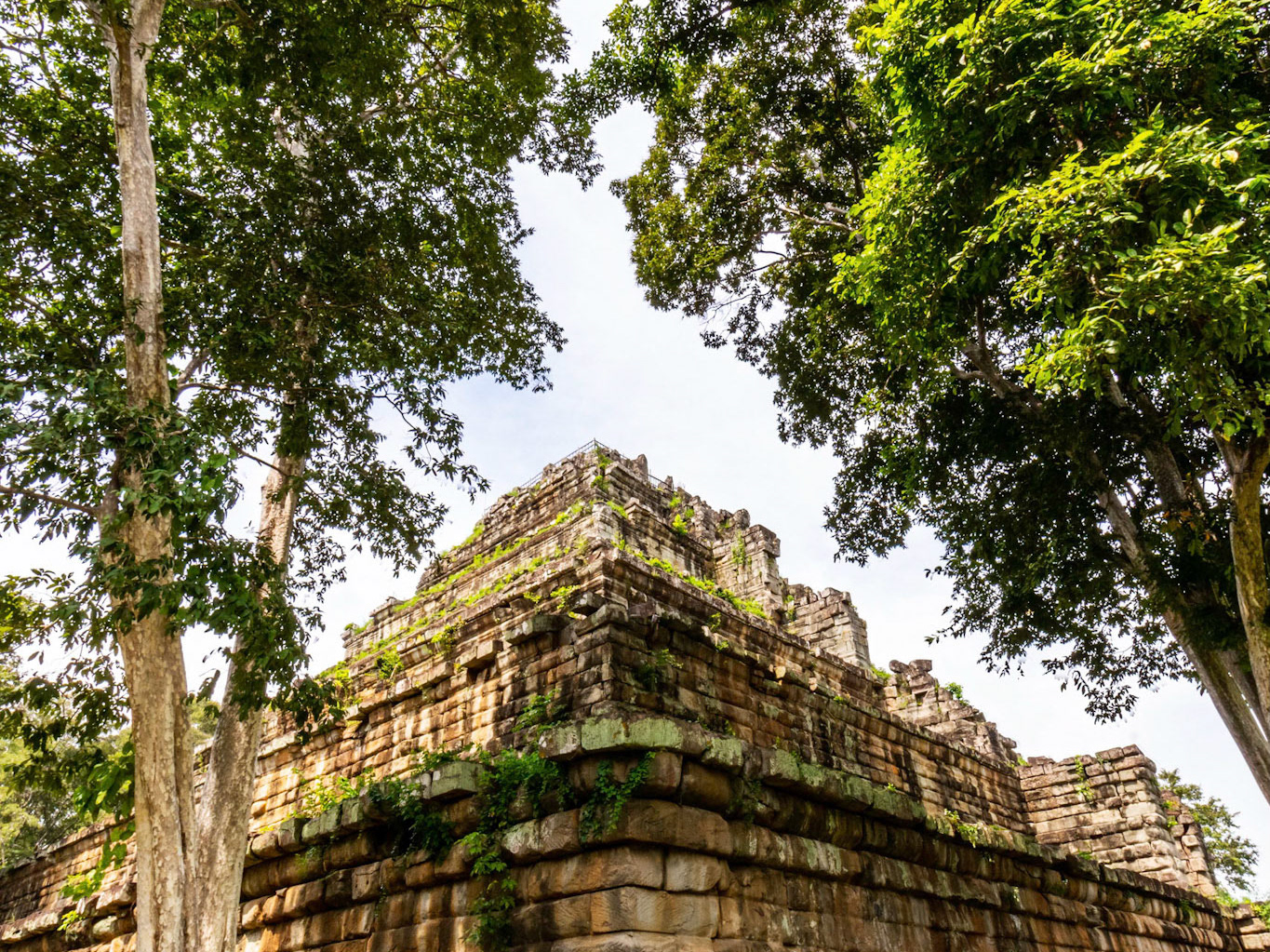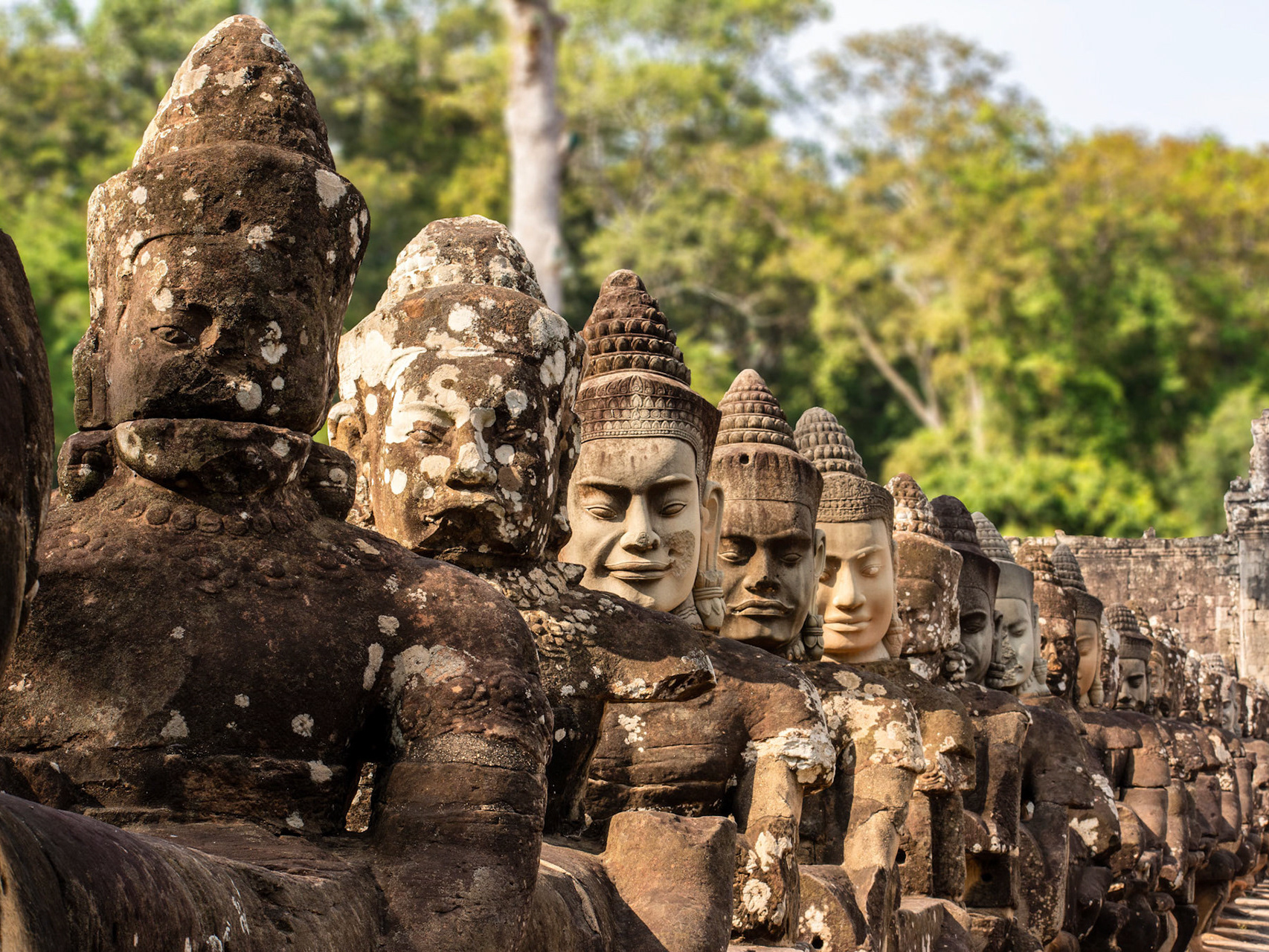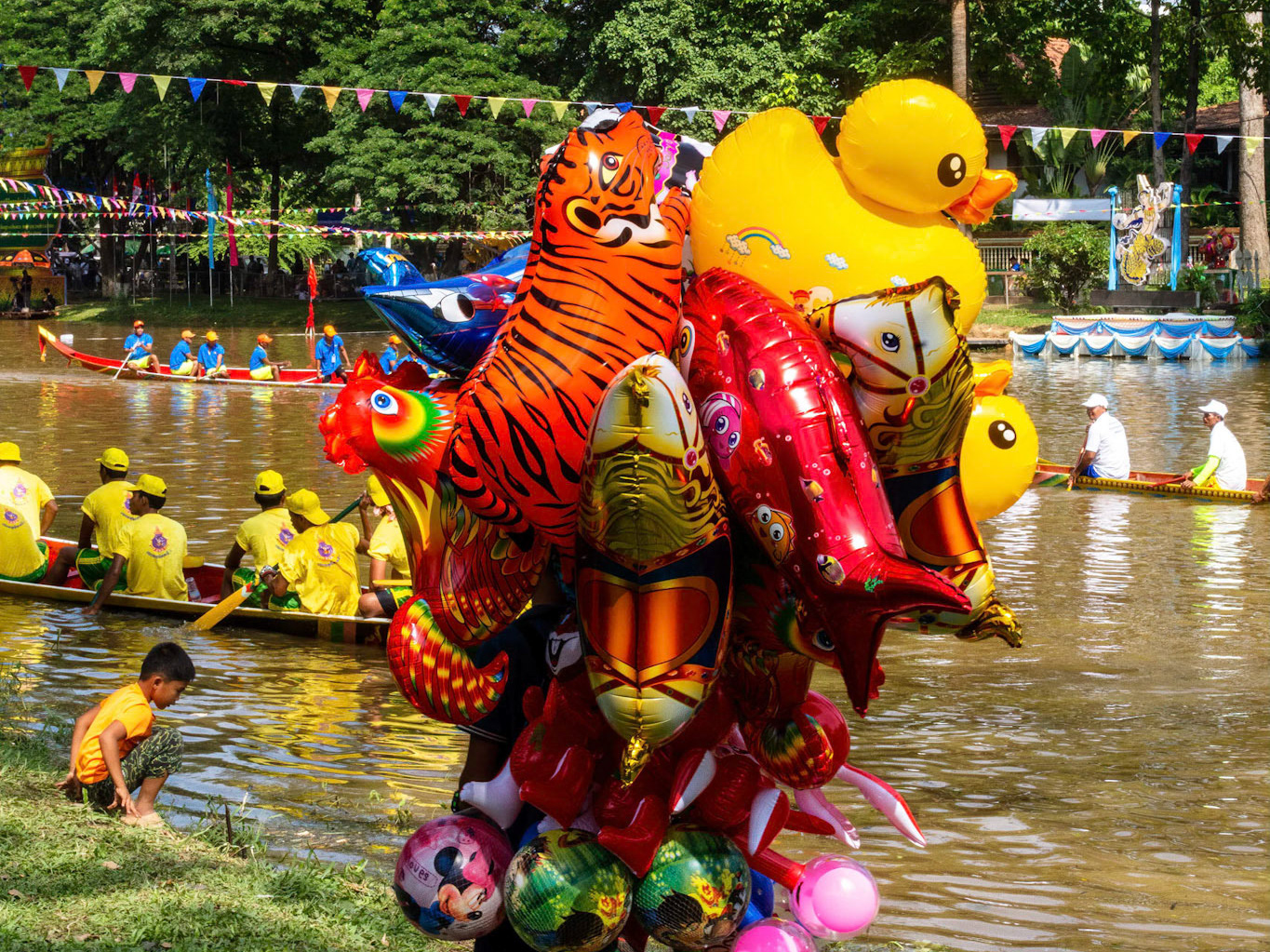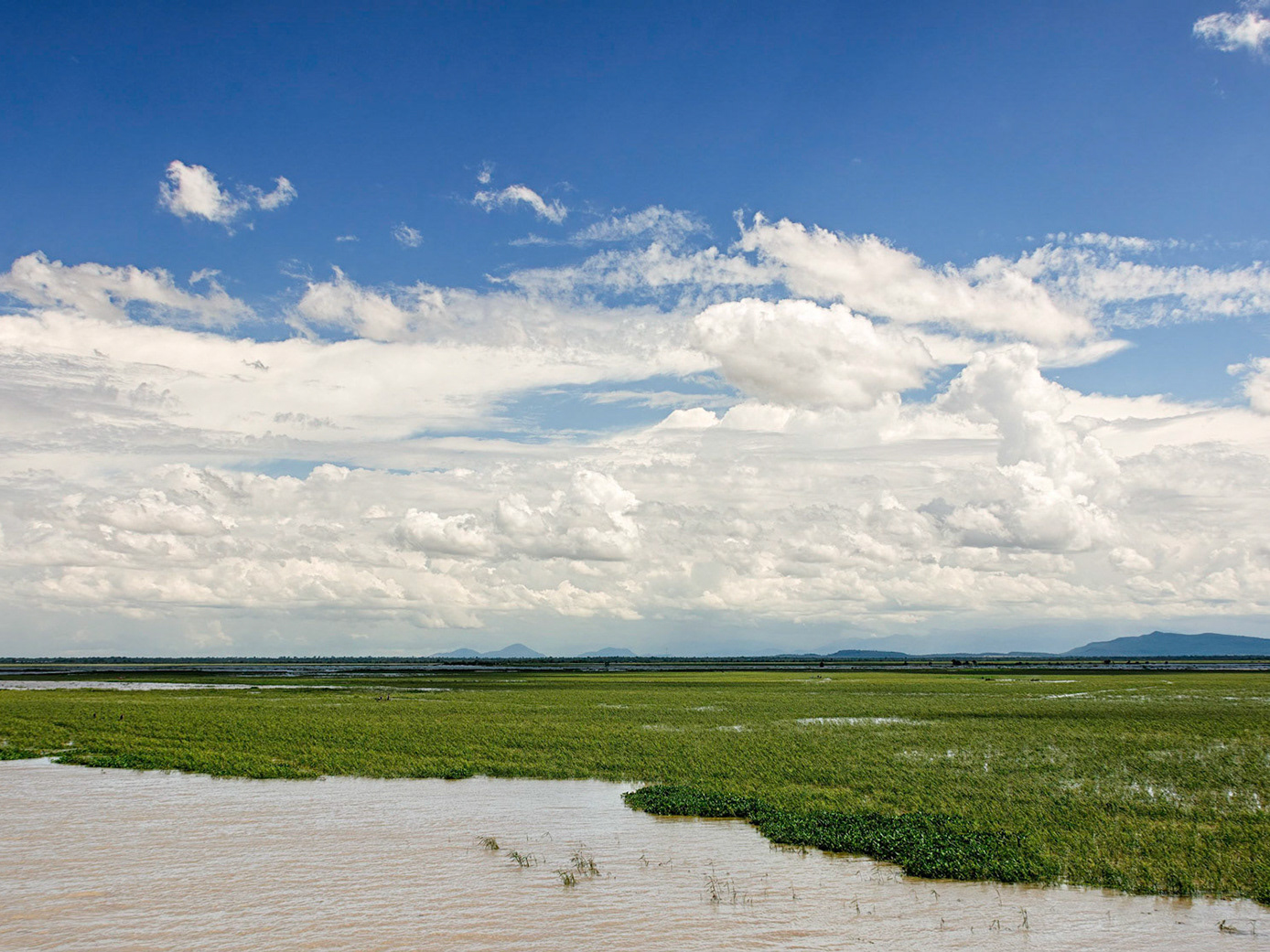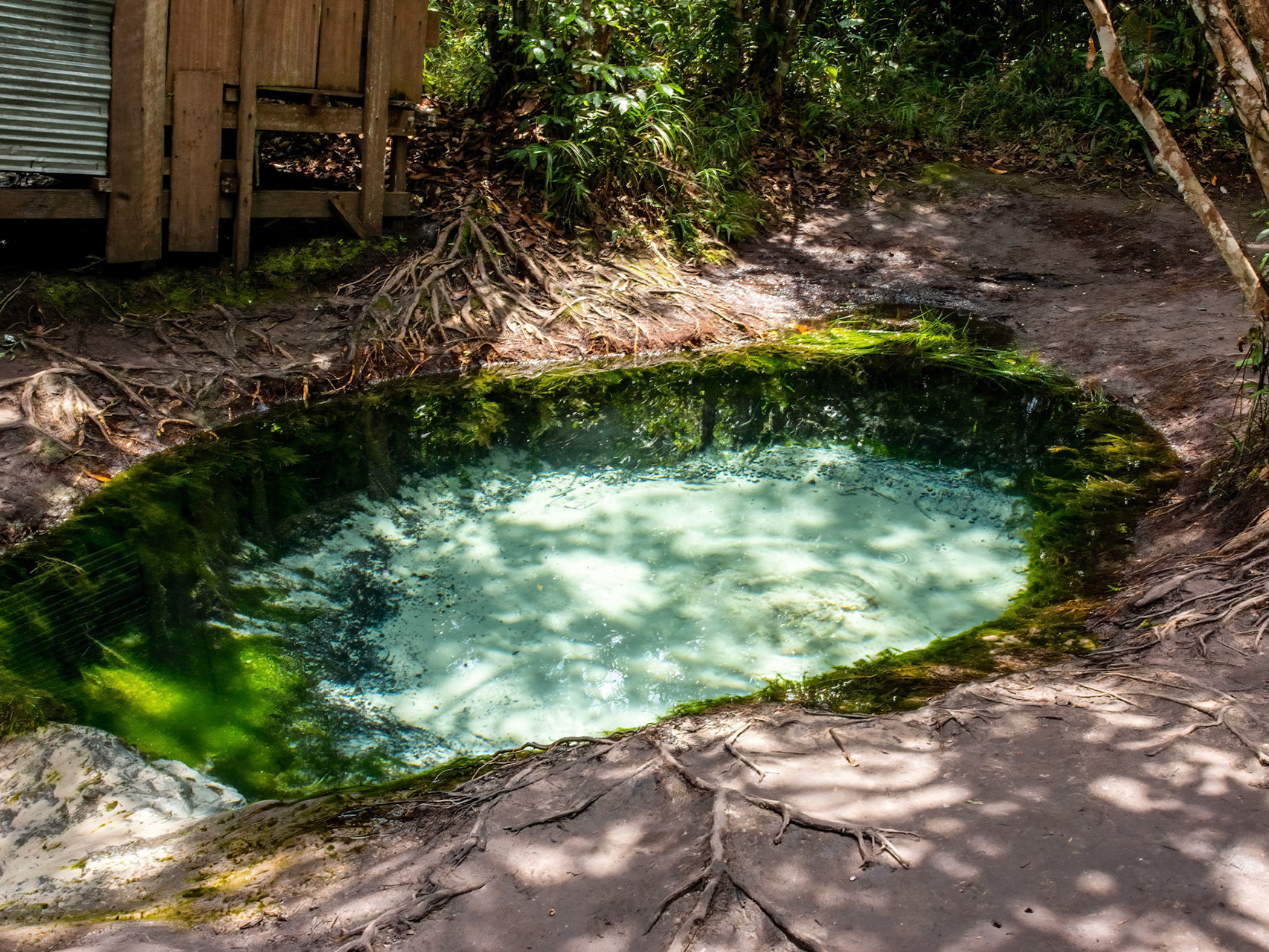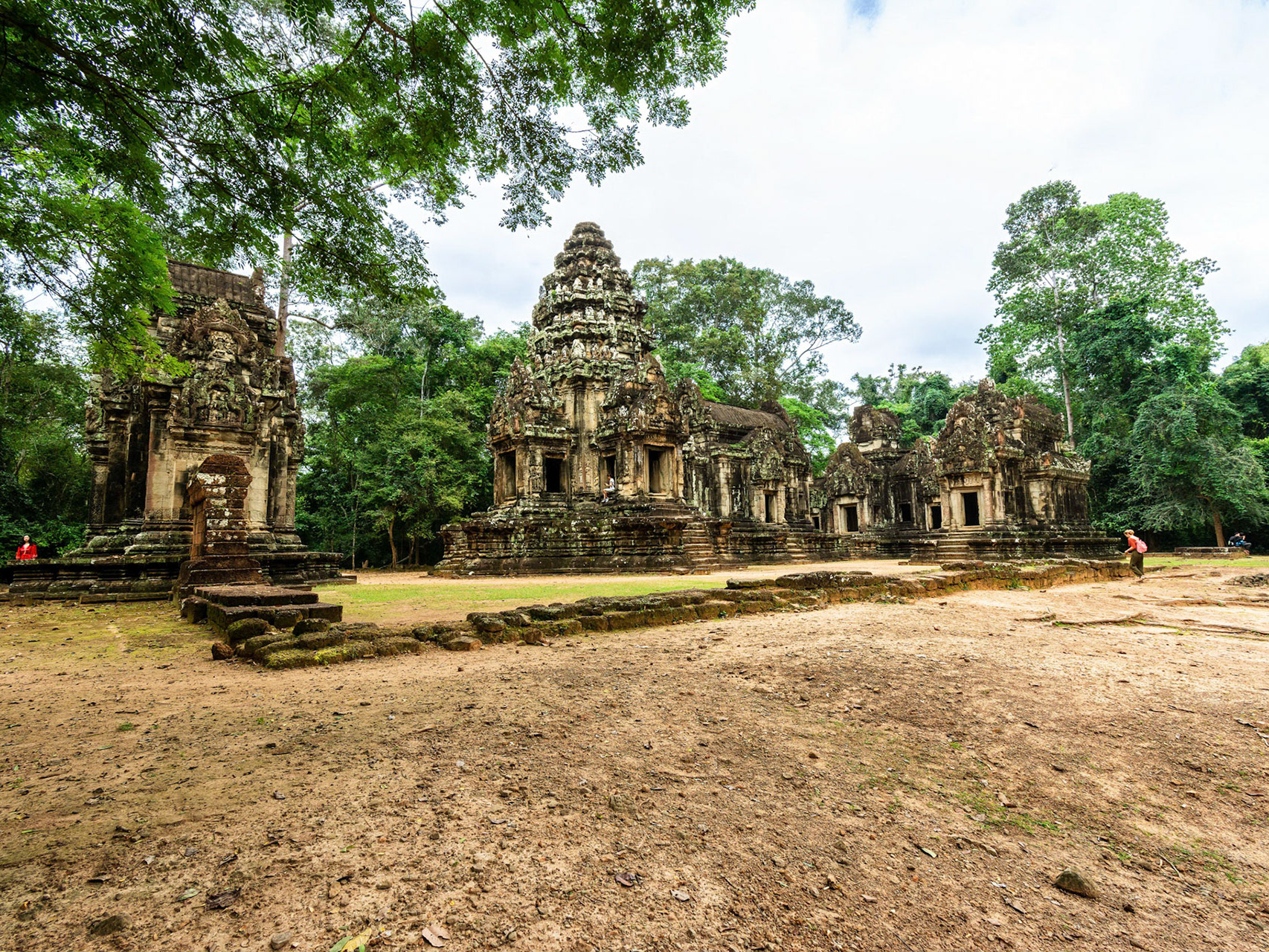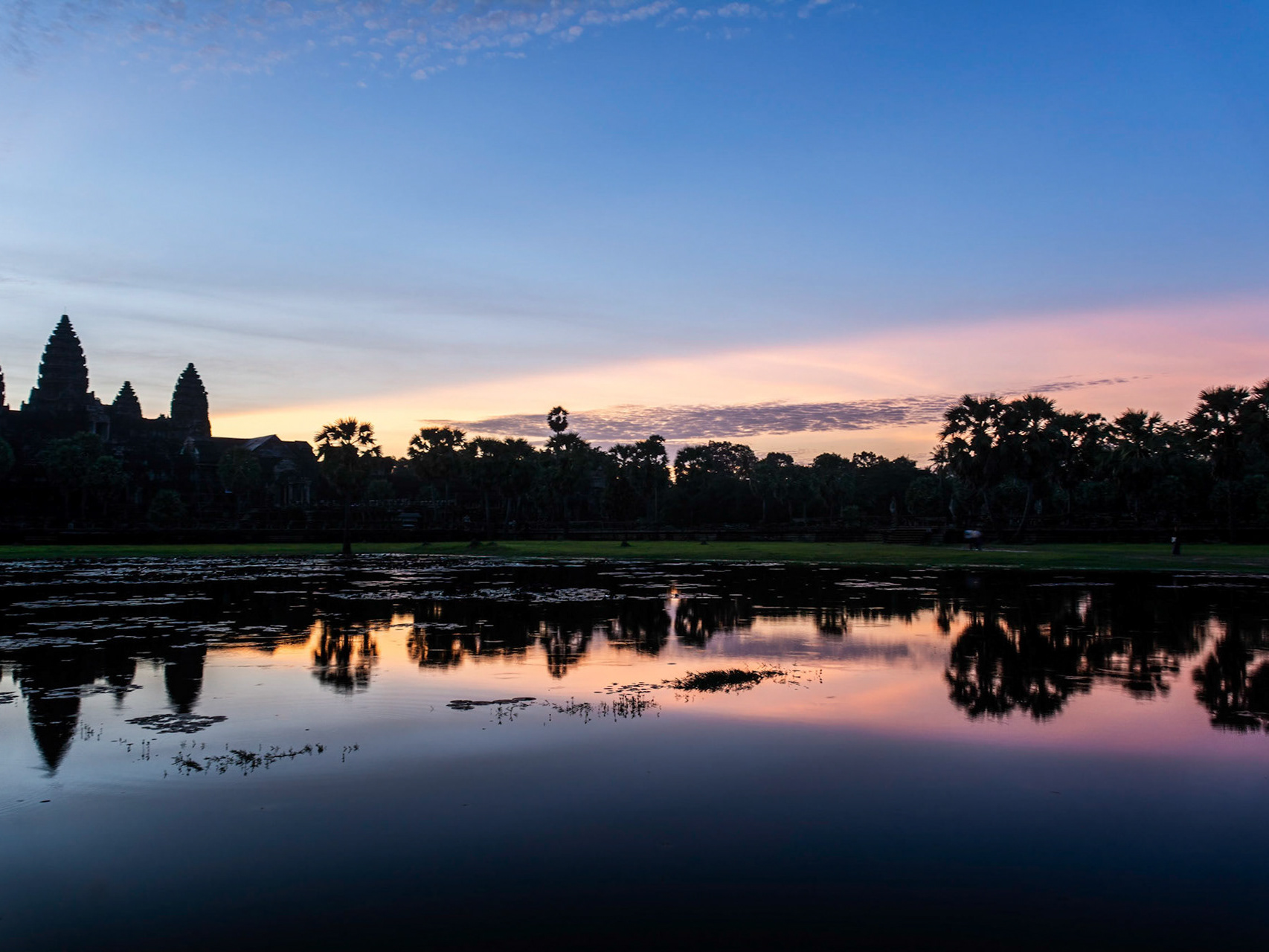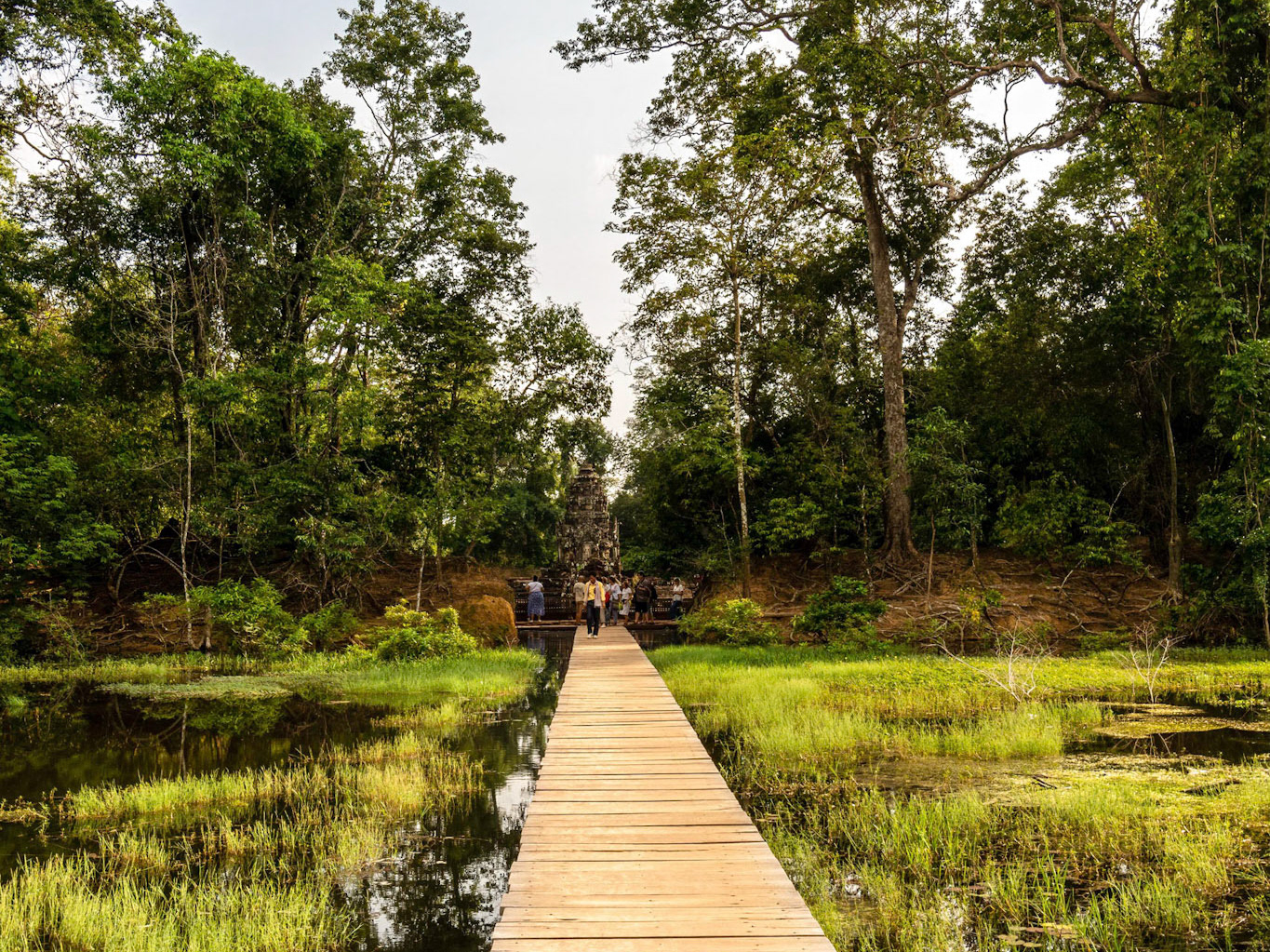My plan was to spend a leisurely morning in Phnom Penh before heading to the airport for the quick flight to Siem Reap; that plan, however, was sent awry when I received an email from the airline advising that my flight was delayed until about 23:00. A flurry of activity failed to find an alternate flight but fortunately my hotel was able to find me a seat on the Post Office minivan, which turned out to be quite handy as it left from the Phnom Penh Post Office and dropped off at the Siem Reap Post Office, much closer to my hotel instead of the bus station outside of town.
Next day a slow start and then Vanny, a local friend, and I went to the Angkor National Museum. I didn’t realise that photography was not allowed in the exhibition halls and managed to get a few shots until I was given a cease and desist. You enter through a briefing hall before going onto any or all of the eight galleries. There’s some controversy about the museum because it is owned and operated by a private Thai company and uses artifacts on loan from the Cambodian National Museum in Phnom Penh and Conservation d'Angkor. To me it’s a case that if this museum didn’t exist the artifacts on display would most likely be locked away unseen. The scale is quite something it took us about three hours to walk around and although we went into every gallery we only actually were able to take in a small fraction of the total display, and by the time time we emerged we were both quite spaced out.
We walked back to the hotel along the river passing several crews practicing for the Water Festival boat races, that took place several days later.
Next day a slow start and then Vanny, a local friend, and I went to the Angkor National Museum. I didn’t realise that photography was not allowed in the exhibition halls and managed to get a few shots until I was given a cease and desist. You enter through a briefing hall before going onto any or all of the eight galleries. There’s some controversy about the museum because it is owned and operated by a private Thai company and uses artifacts on loan from the Cambodian National Museum in Phnom Penh and Conservation d'Angkor. To me it’s a case that if this museum didn’t exist the artifacts on display would most likely be locked away unseen. The scale is quite something it took us about three hours to walk around and although we went into every gallery we only actually were able to take in a small fraction of the total display, and by the time time we emerged we were both quite spaced out.
We walked back to the hotel along the river passing several crews practicing for the Water Festival boat races, that took place several days later.
